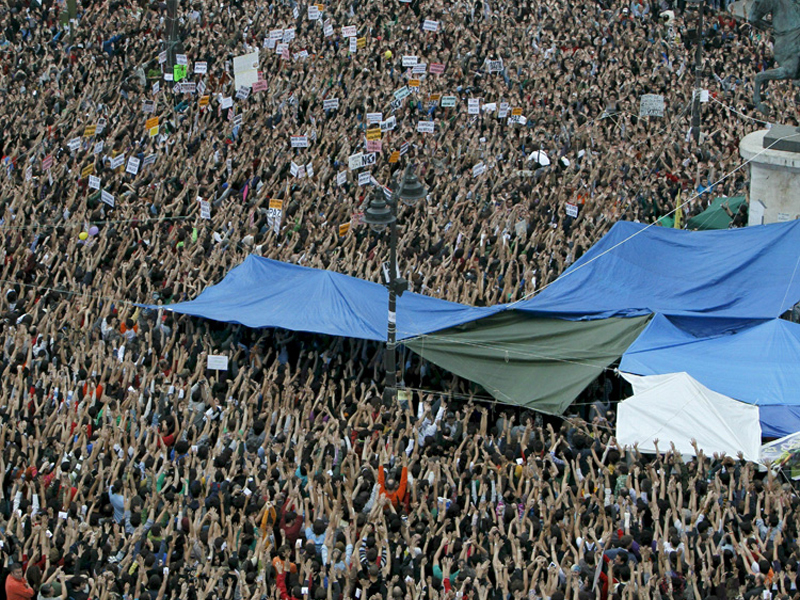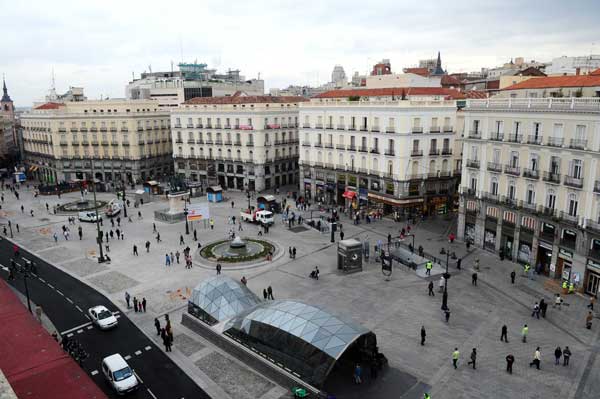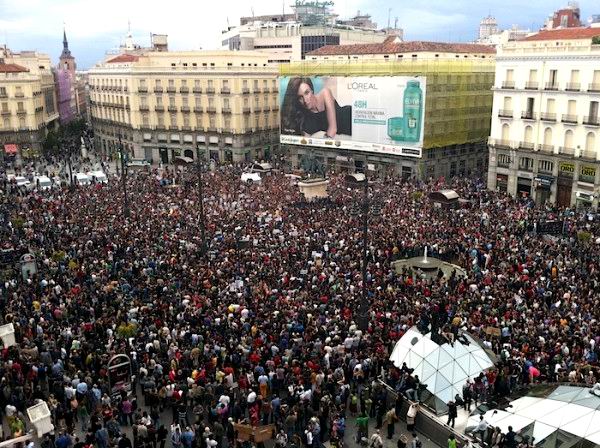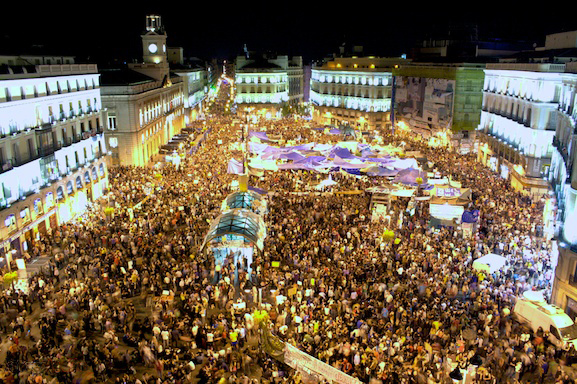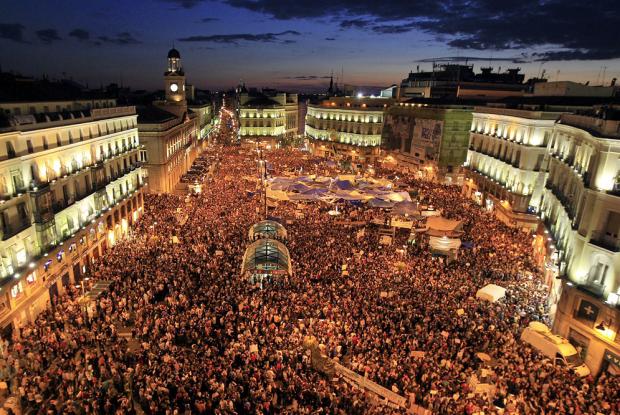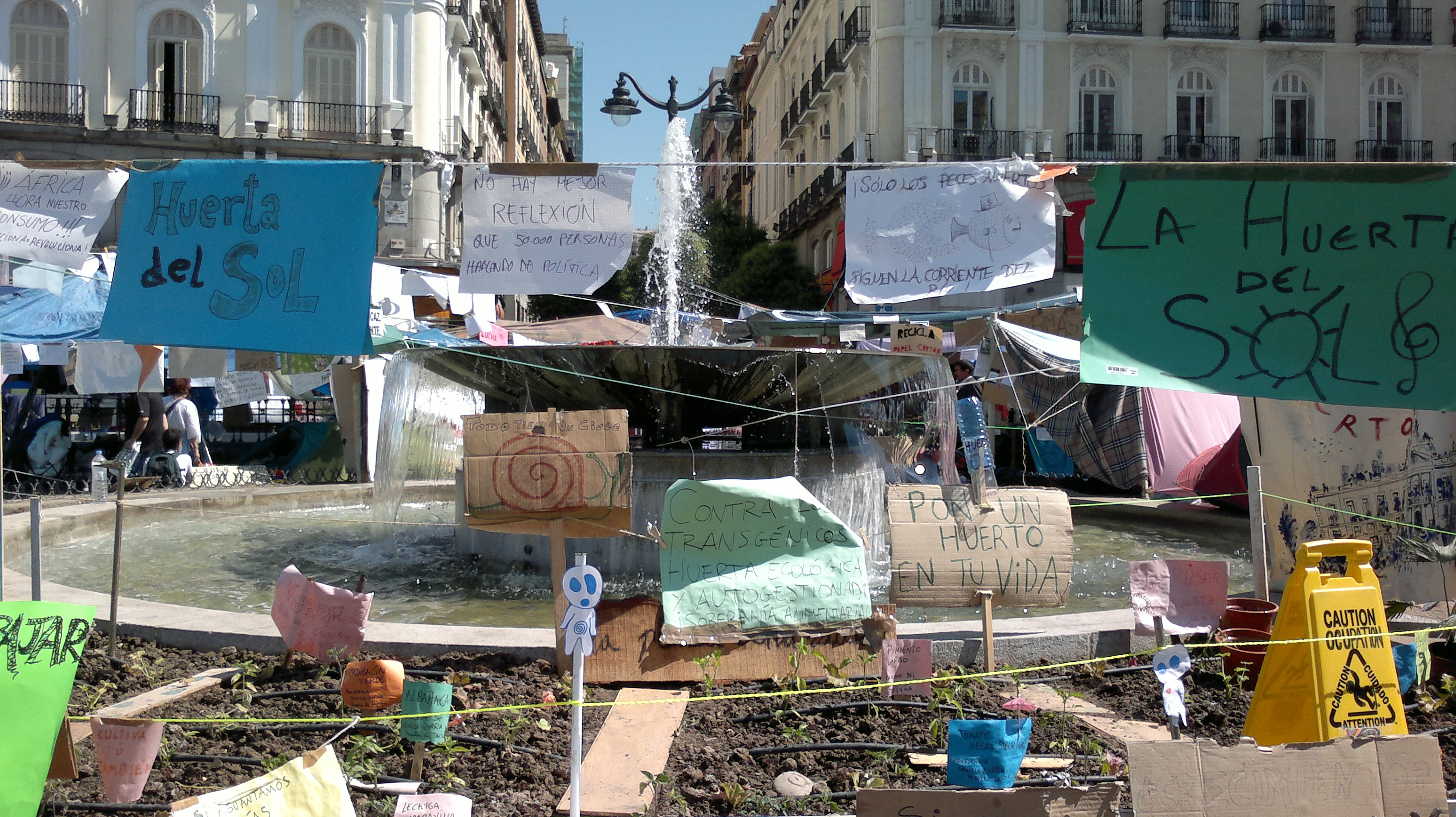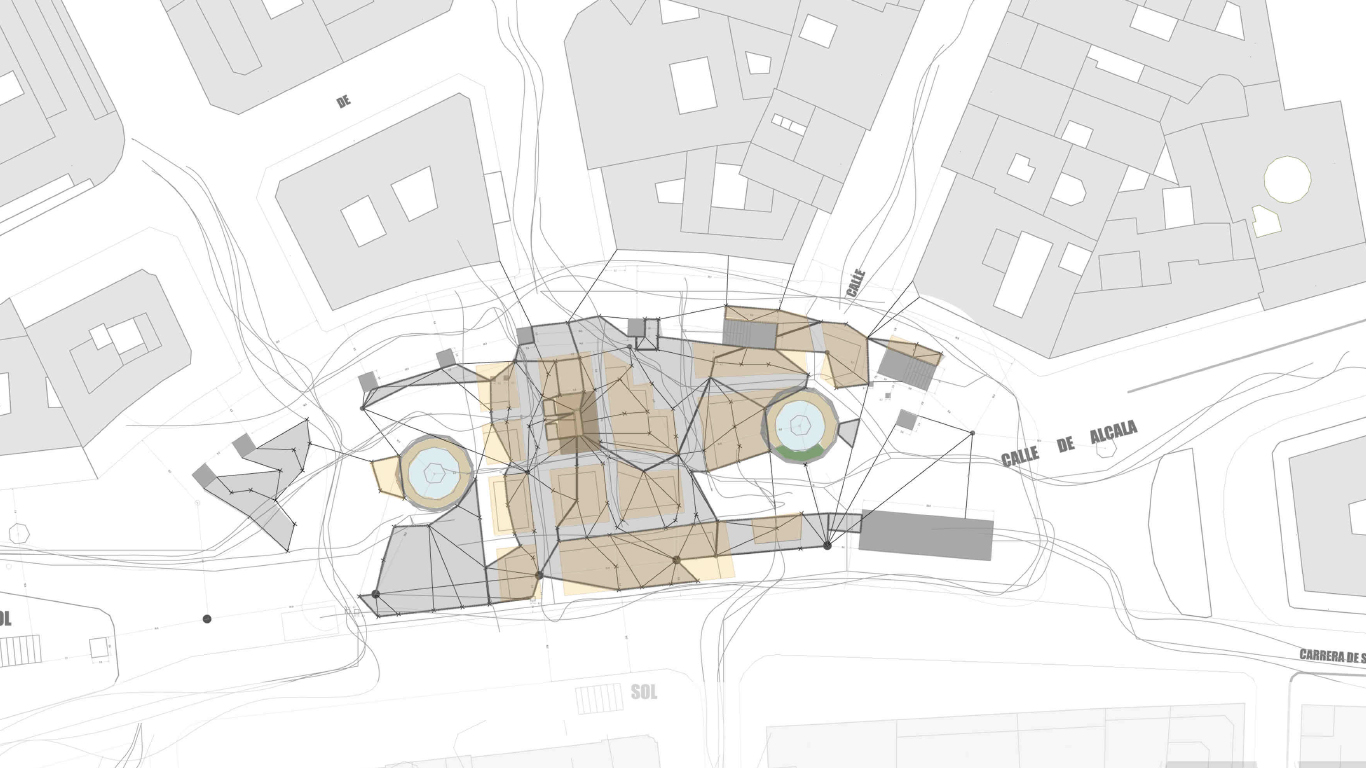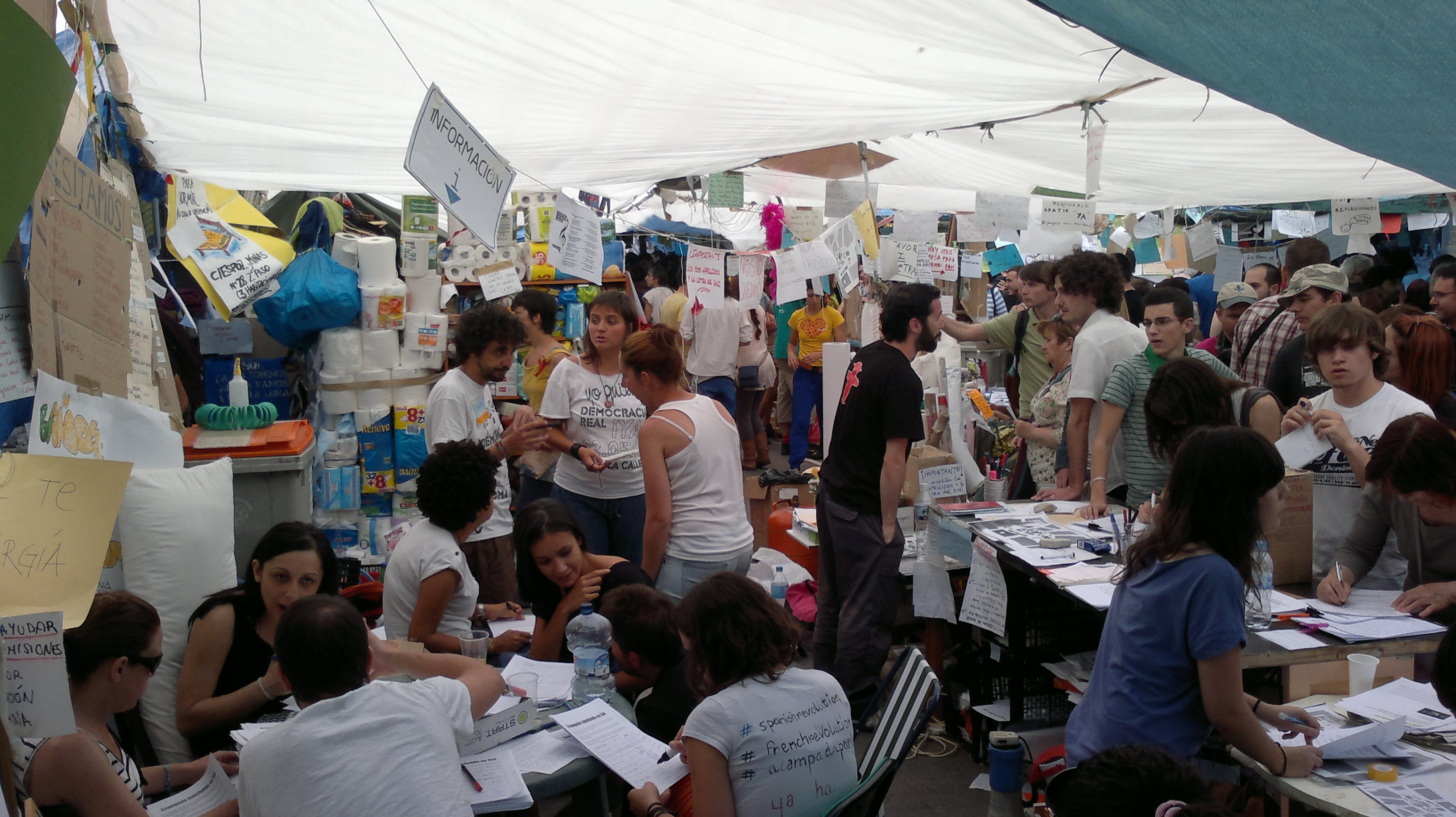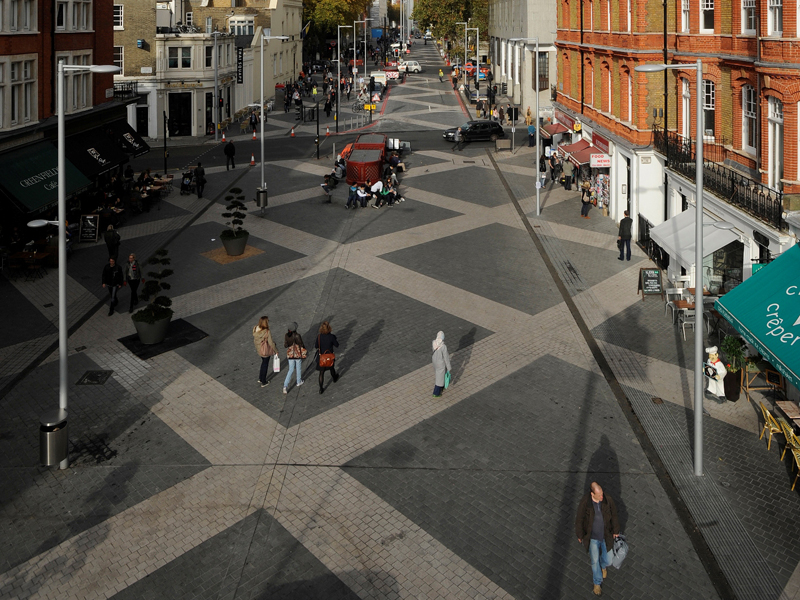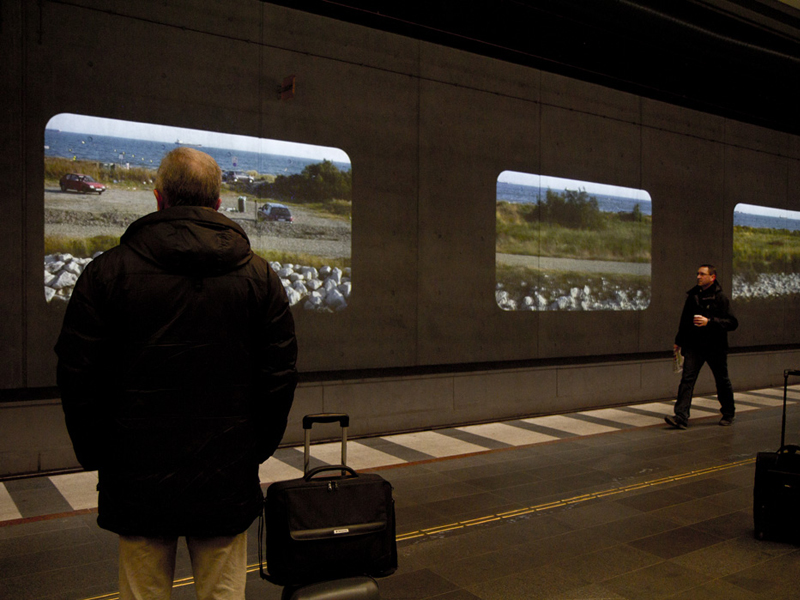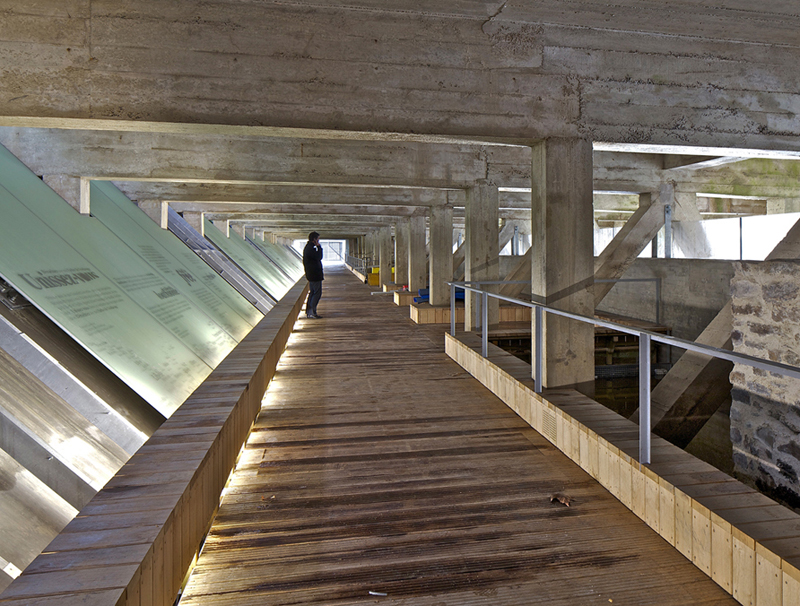Previous state
On 15 May 2011, with the Arab Spring as background, and in the context of serious economic crisis and growing disrepute of public institutions, protest marches called by the “¡Democracia Real Ya!” movement, which was united by the slogan, “We are not commodities in the hands of politicians and bankers”, were organised in more than fifty Spanish cities. The demonstrations in Madrid, which ended up with disturbances and police charges, led to a small percentage of the demonstrators deciding spontaneously to continue the protest independently of the original organisers. Early in the morning they set up an improvised camp site in the Madrid square, known as Puerta del Sol.This central square, perhaps the most popular in the capital, brings together such symbolic elements as Kilómetro Cero (Kilometre Zero), which is the point of convergence of the State system of radial roads, the clock tower that rings in the New Year, the emblematic statue of a bear and a strawberry tree, heraldic icons of the city. Constructed in the nineteenth century, it is semicircular in shape and occupies a surface area of approximately one hectare.
Aim of the intervention
The aim of the occupation of the Puerta de Sol was to demand thoroughgoing changes in the prevailing political and economic system. Corruption scandals, the rescue of banks with public money, cuts in social spending, the highest unemployment figures in the European Union, precariousness of employment, difficulties of access to decent housing, the reservations about the systems of parliamentary representation, Internet users’ rejection of intellectual property laws, and a long, heterogeneous list of other grievances which appeared during the protests ensured that the initially small camp would expand exponentially.Description
Withstanding intermittent disappearances, the occupation took over the whole square. It obeyed dynamic impulses which meant that it was constantly adapting to the demands of the moment. Sometimes it took on a the dense morphology of a kasbah, while on other occasions it swiftly folded in on itself to make space for big demonstrations.It consisted of ephemeral, lightweight constructions including tents from commercial brands suitable for spending the night in, and structures built on the spot with discarded materials that then acquired previously unsuspected functions. Ropes, cables, canvas, plastic and sticking tape were applied in ingenious constructions where logistical requirements, for example organising sanitary services, or organisational functions, found shelter. They were also used to put up, with surprising speed, large tents that protected the campers from sun and rain. The constructions also protected, effectively and decisively, spaces of public interest, for example thoroughfares, libraries and crèches. The tents of the occupation were secured with heavy objects, for example flagons full of water so as to avoid damaging the paving of the Puerta del Sol.
Assessment
Denounced by some as illegal appropriation of urban space and suppressed in the national media, which only mentioned it under pressure from the social networks or the foreign press, the Puerta del Sol occupation disappeared a few weeks after its spontaneous appearance. Cleaning brigades organised by the campers left the pre-existing space as they had found it.The importance of this surprising evanescent city is still difficult to gauge. Its physical and yet dynamic condition situates it halfway between the robustness of urbs and the contingence of civitas. However, its legacy shows that the public space of European cities continues to be loaded with the political sense that has made it the scene of dissidence for many centuries. This sense has always questioned the premises of law and order currently in force in order to conquer the civil rights we presently enjoy. It would be rash to think that our democracies are not subject to it also.
David Bravo │ Translation by Julie Wark
[Last update: 18/06/2018]


